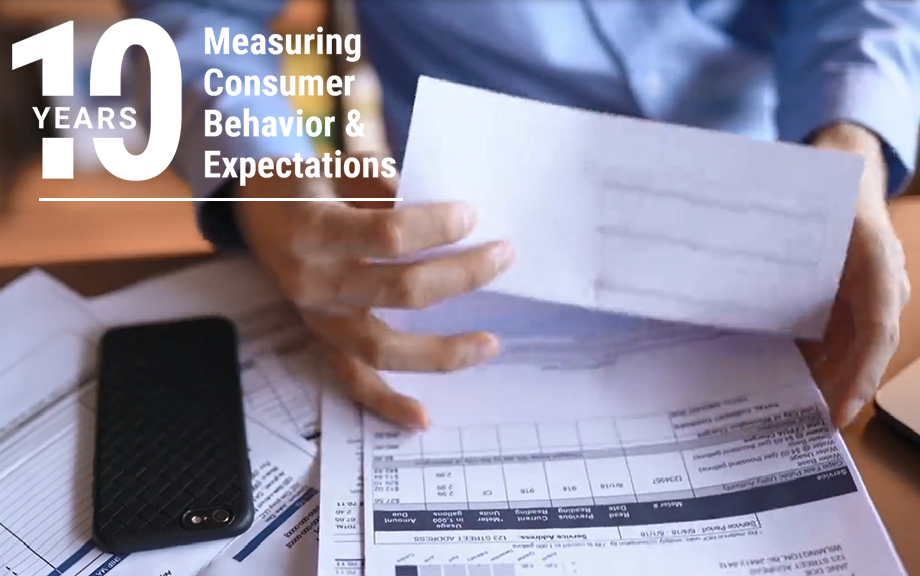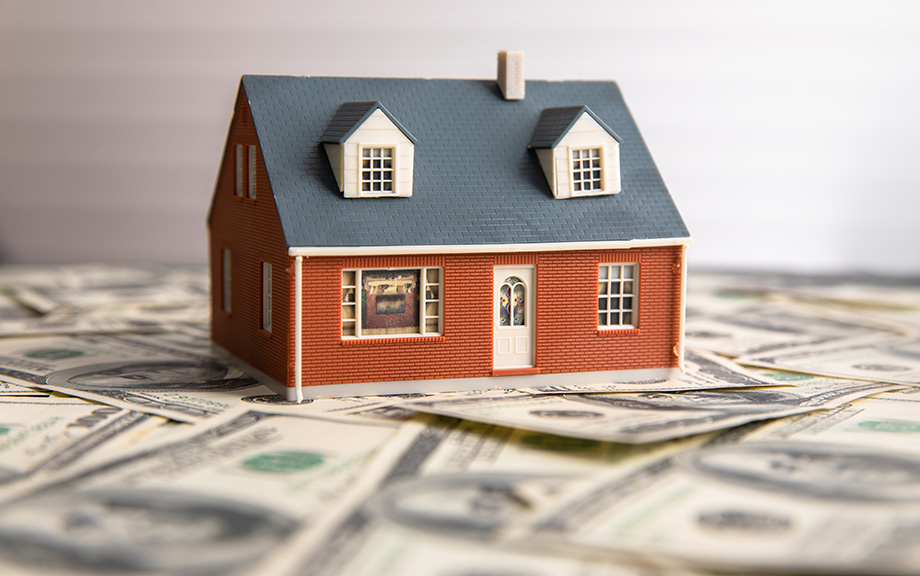Who Is Still on First? An Update of Characteristics of First‑Time Homebuyers

Following the COVID-19 health crisis, home prices and mortgage rates rose sharply. This created concerns that first-time homebuyers (FTBs) would be disadvantaged and would lose ground. Earlier this year, we documented that the share of purchase mortgages by FTBs, as well as their share of home purchases, have actually increased slightly over the past couple of years. It appears that FTBs are holding their own in this challenging housing market. This raises the question of whether the characteristics of FTBs have changed. In a 2019 post, we described the characteristics of these buyers over the period from 2000 to 2016. In this post, we provide an update through 2024.
A Check‑In on the Mortgage Market

Debt balances continued to march upward in the second quarter of 2025, according to the latest Quarterly Report on Household Debt and Credit from the New York Fed’s Center for Microeconomic Data. Mortgage balances in particular saw an increase of $131 billion. Following a steep rise in home prices since 2019, several housing markets have seen dips in prices and concerns were sparked about the state of the mortgage market. Here, we disaggregate mortgage balances and delinquency rates by type and region to better understand the landscape of the current mortgage market, where any ongoing risks may lie, regionally and by product.
Breaking Down Auto Loan Performance

Debt balances continued to rise at a moderate pace in the fourth quarter of 2024, and delinquencies, particularly for auto loans and credit cards, remained elevated, according to the latest Quarterly Report on Household Debt and Credit from the New York Fed’s Center for Microeconomic Data. Auto loan balances have grown steadily since 2011, expanding by $48 billion in 2024. This increase reflects a steady inflow of newly originated auto loan balances, which in 2024 were boosted primarily by originations to very prime borrowers (those with credit scores over 760) while originations to borrowers with midprime and subprime scores held roughly steady. In this post, we take a closer look at auto loan performance and find that delinquencies have been rising across credit score bands and area income levels. We also break down auto loan performance by lender type and find that delinquencies are primarily concentrated in loans from non-captive auto finance companies.
Are First‑Time Home Buyers Facing Desperate Times?

Based on recent proposals and policy dialogue, it would appear that first-time home buyers (FTB) are indeed facing desperate times. For example, in a recent Urban Institute study, Michael Stegman, Ted Tozer, and Richard Green advocate for a zero-downpayment Federal Housing Administration (FHA) mortgage. They argue that this would be a more efficient way to deliver much needed support to help households transition to homeownership given the challenges of high house prices and mortgage rates.
Delinquency Is Increasingly in the Cards for Maxed‑Out Borrowers

This morning, the New York Fed’s Center for Microeconomic Data released the Quarterly Report on Household Debt and Credit for the first quarter of 2024. Household debt balances grew by $184 billion over the previous quarter, slightly less than the moderate growth seen in the fourth quarter of 2023. Housing debt balances grew by $206 billion. Auto loans saw a $9 billion increase, continuing their steady growth since the second quarter of 2020, while balances on other non-housing debts fell. Credit card balances fell by $14 billion, which is typical for the first quarter. However, an increasing number of borrowers are behind on credit card payments. In this post, we explore the relationship between credit card delinquency and changes in credit card “utilization rates.”
The New York Fed Consumer Credit Panel: A Foundational CMD Data Set

As the Great Financial Crisis and associated recession were unfolding in 2009, researchers at the New York Fed joined colleagues at the Board of Governors and Philadelphia Fed to create a new kind of data set. Household liabilities, particularly mortgages, had gone from being a quiet little corner of the financial system to the center of the worst financial crisis and sharpest recession in decades. The new data set was designed to provide fresh insights into this part of the economy, especially the behavior of mortgage borrowers. In the fifteen years since that effort came to fruition, the New York Fed Consumer Credit Panel (CCP) has provided many valuable insights into household behavior and its implications for the macro economy and financial stability.
The CCP was one of the first data sets drawn from credit bureau data, one of the earliest features of the Center for Microeconomic Data (CMD), and the primary source material for some of the CMD’s most important contributions to policy and research. Here we review a few of the main household debt themes over the past fifteen years, and how our analyses contributed to their understanding.
FHA First‑Time Buyer Homeownership Sustainability: An Update

An important part of the mission of the Federal Housing Administration (FHA) is to provide affordable mortgages that both promote the transition from renting to owning and create “sustainable” homeownership. The FHA has never defined what it means by sustainability. However, we developed a scorecard in 2018 that tracks the long-term outcomes of FHA first-time buyers (FTBs) and update it again in this post. The data show that from 2011 to 2016 roughly
21.8 percent of FHA FTBs failed to sustain their homeownership.
Credit Card Markets Head Back to Normal after Pandemic Pause

Total household debt balances increased by $16 billion in the second quarter of 2023, according to the latest Quarterly Report on Household Debt and Credit from the New York Fed’s Center for Microeconomic Data. This reflects a modest rise from the first quarter. Credit card balances saw the largest increase of all debt types—$45 billion—and now stand at $1.03 trillion, surpassing $1 trillion in nominal terms for the first time in the series history. After a sharp contraction in the first year of the pandemic, credit card balances have seen seven quarters of year-over-year growth. The second quarter of 2023 saw a brisk 16.2 percent increase from the previous year, continuing this strong trend. With credit card balances at historic highs, we consider how lending and repayment have evolved using the New York Fed’s Consumer Credit Panel (CCP), which is based on anonymized Equifax credit report data.
The Great Pandemic Mortgage Refinance Boom

Total debt balances grew by $148 billion in the first quarter of 2023, a modest increase after 2022’s record growth. Mortgages, the largest form of household debt, grew by only $121 billion, according to the latest Quarterly Report on Household Debt and Credit from the New York Fed’s Center for Microeconomic Data. The increase was tempered by a sharp reduction in both purchase and refinance mortgage originations. The pandemic boom in purchase originations was driven by many factors – low mortgage rates, strong household balance sheets, and an increased demand for housing. Homeowners who refinanced in 2020 and 2021 benefitted from historically low interest rates and will be enjoying low financing costs for decades to come. These “rate refinance” borrowers have lowered their monthly mortgage payments, improving their cash flow, while other “cash-out” borrowers extracted equity from their real estate assets, making more cash available for consumption. Here, we explore the refi boom of 2020-21–who refinanced, who took out cash, and how much potential consumption support these transactions provided. In this analysis, as well as the Quarterly Report, we use our Consumer Credit Panel (CCP), which is based on anonymized credit reports from Equifax.
First‑Time Buyers Did Not Drive Strong House Price Appreciation in 2021

In May 2022, Sam Khater—chief economist for Freddie Mac—argued that a surge in first-time buyers had been an important driver of the housing market the previous year. In contrast, using data from the New York Fed Consumer Credit Panel, we find that the share of home purchases by first-time buyers fell in 2021. This suggests that other factors were important to the rapid increase in house prices in 2021.










 RSS Feed
RSS Feed Follow Liberty Street Economics
Follow Liberty Street Economics